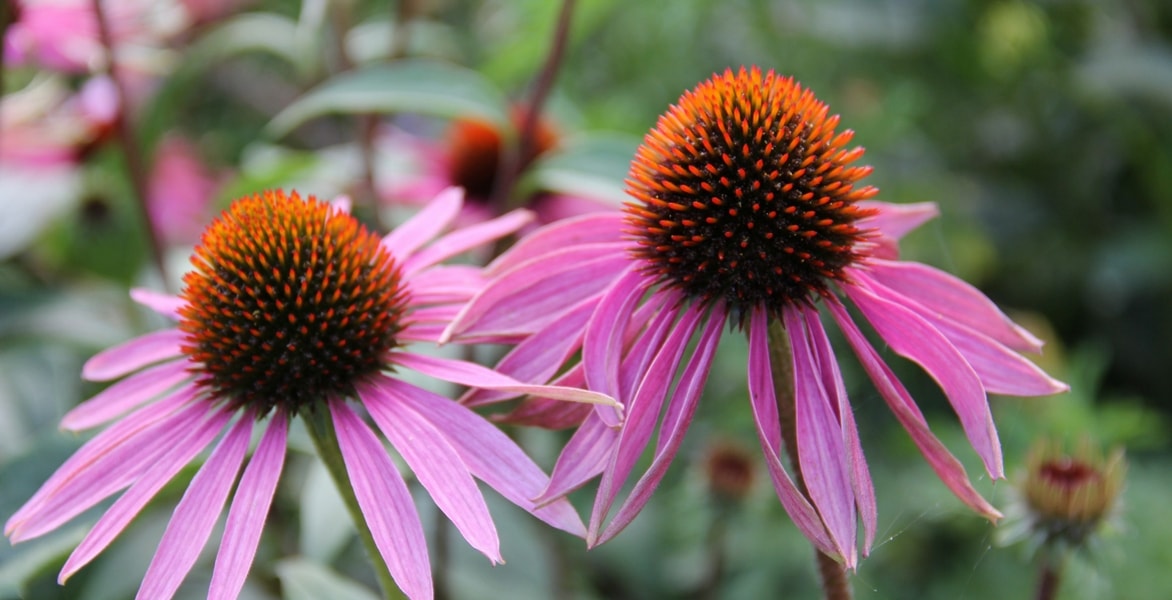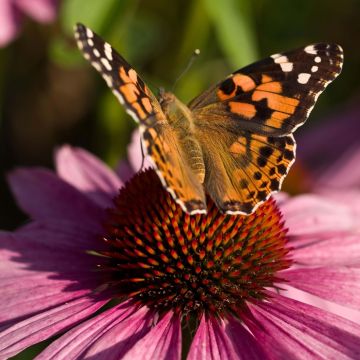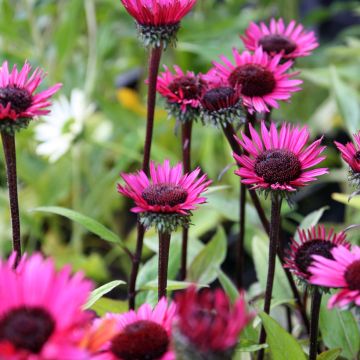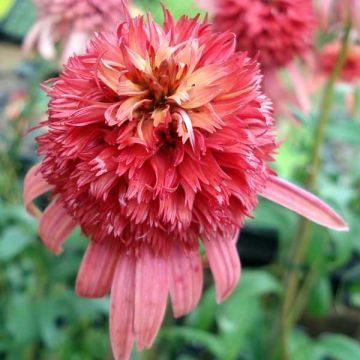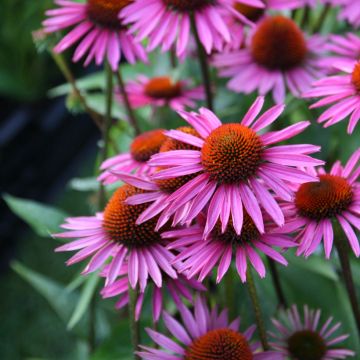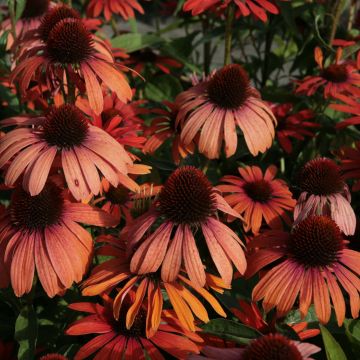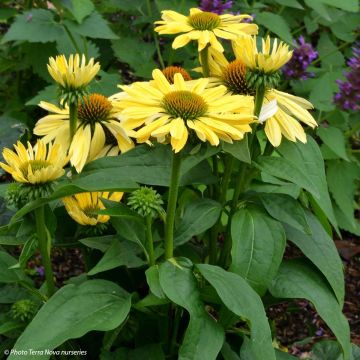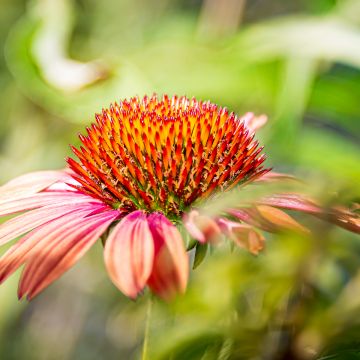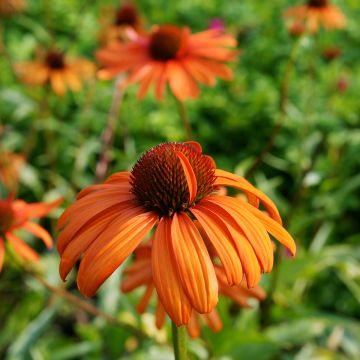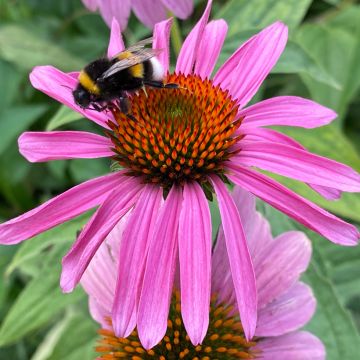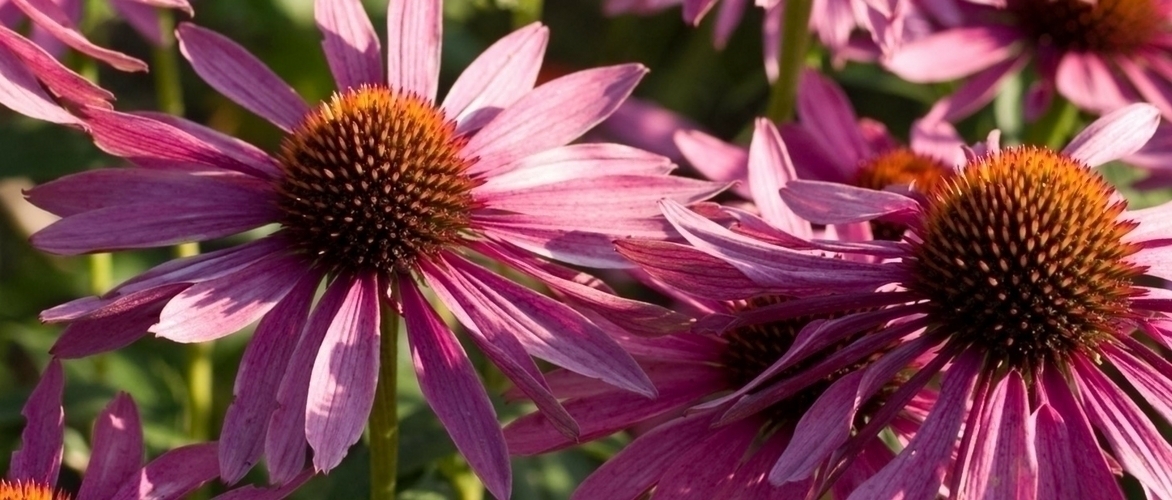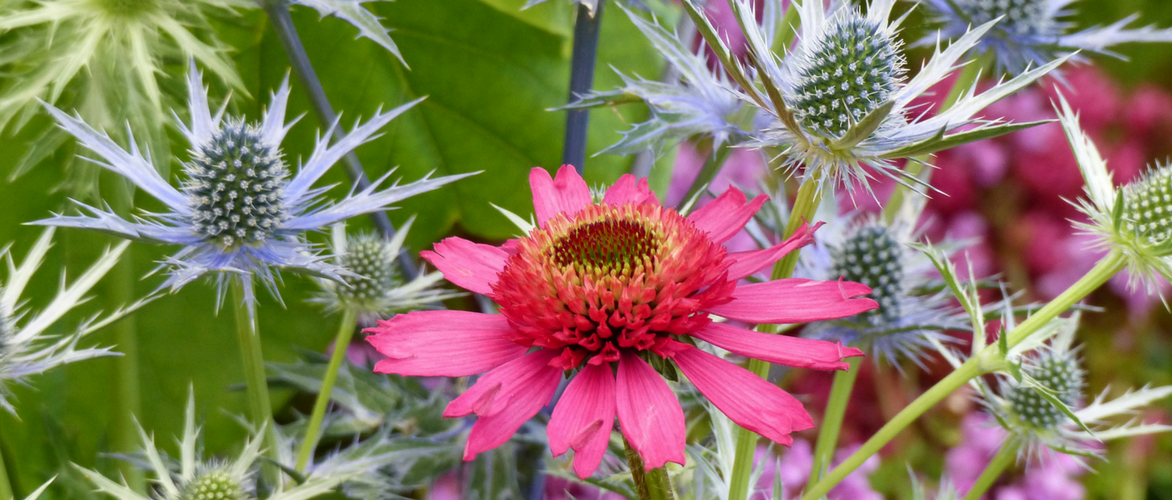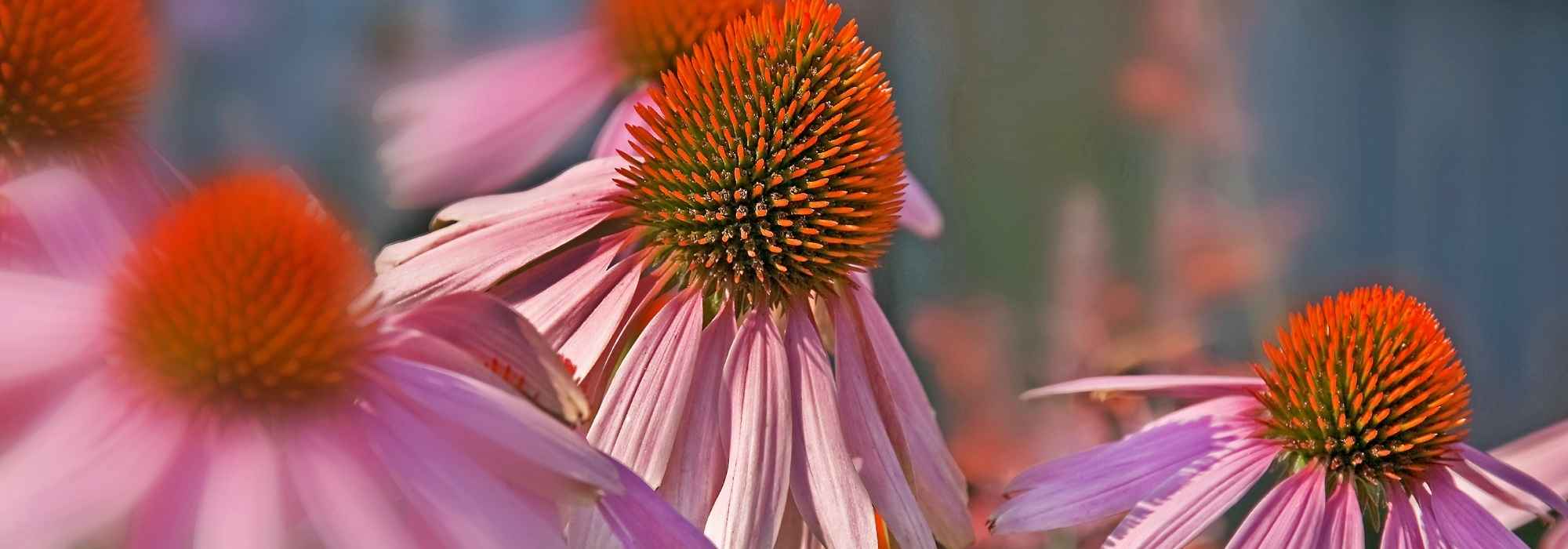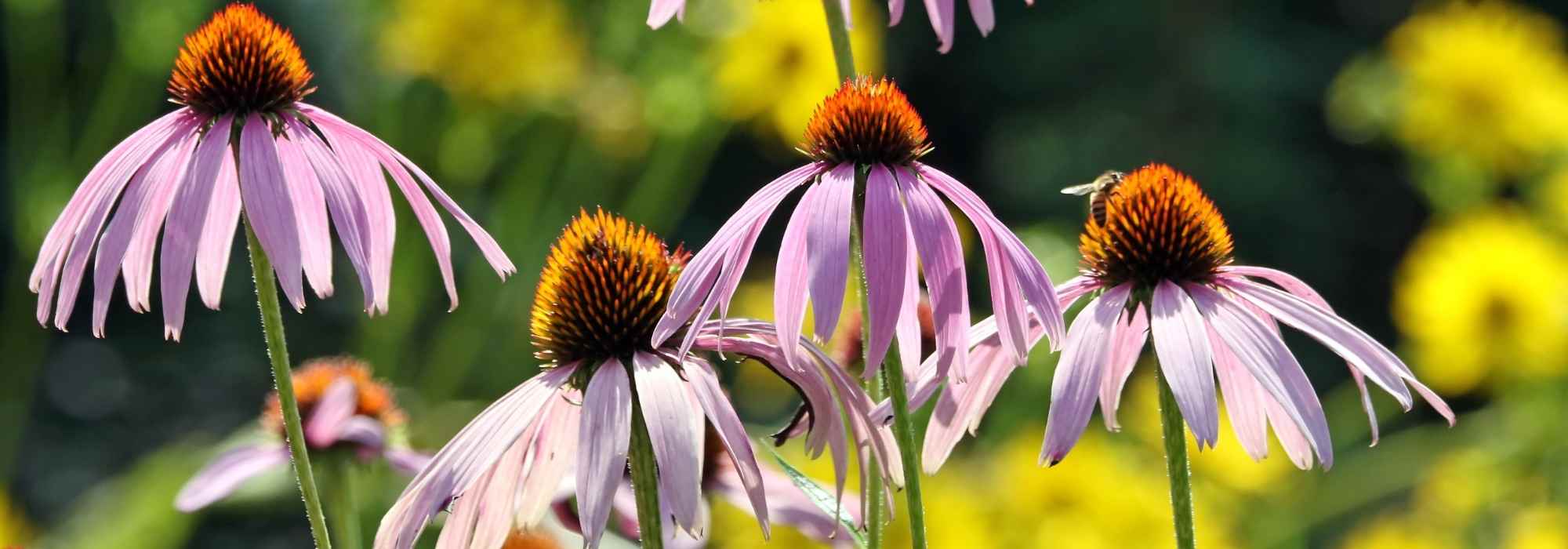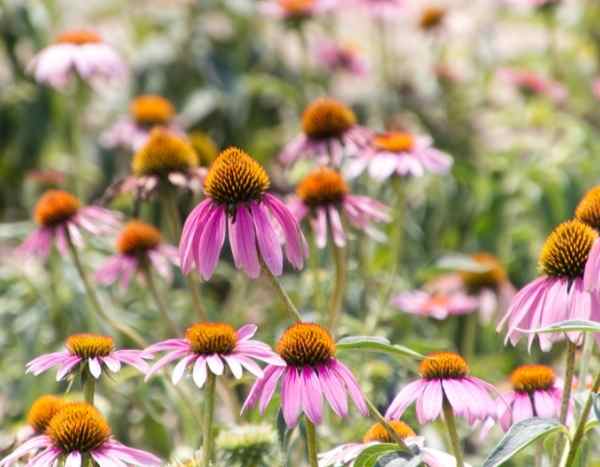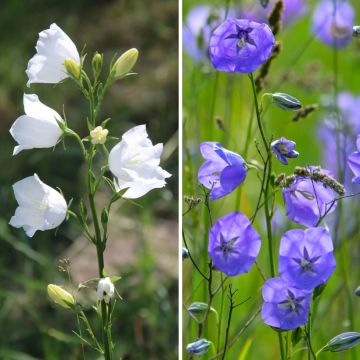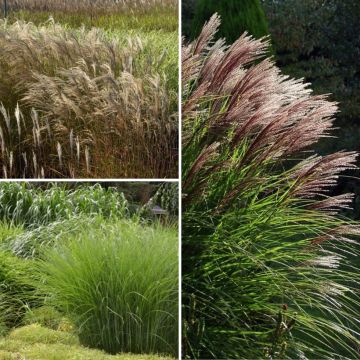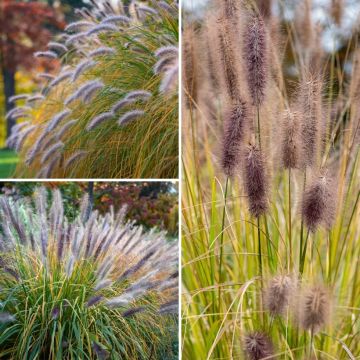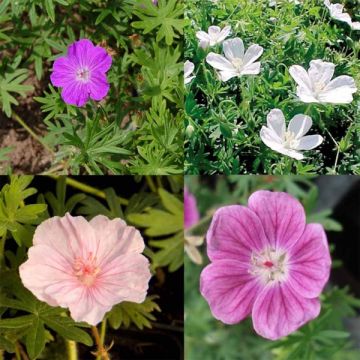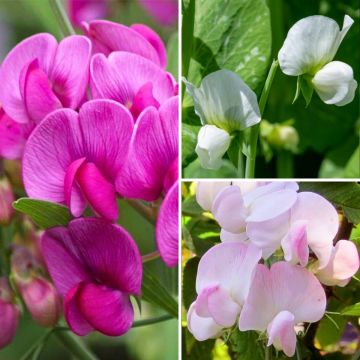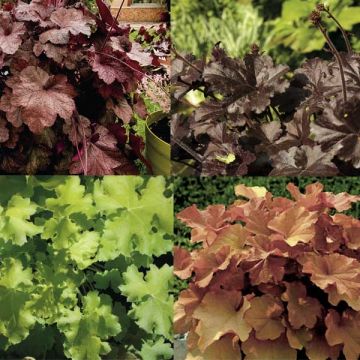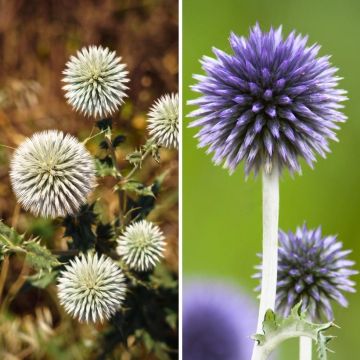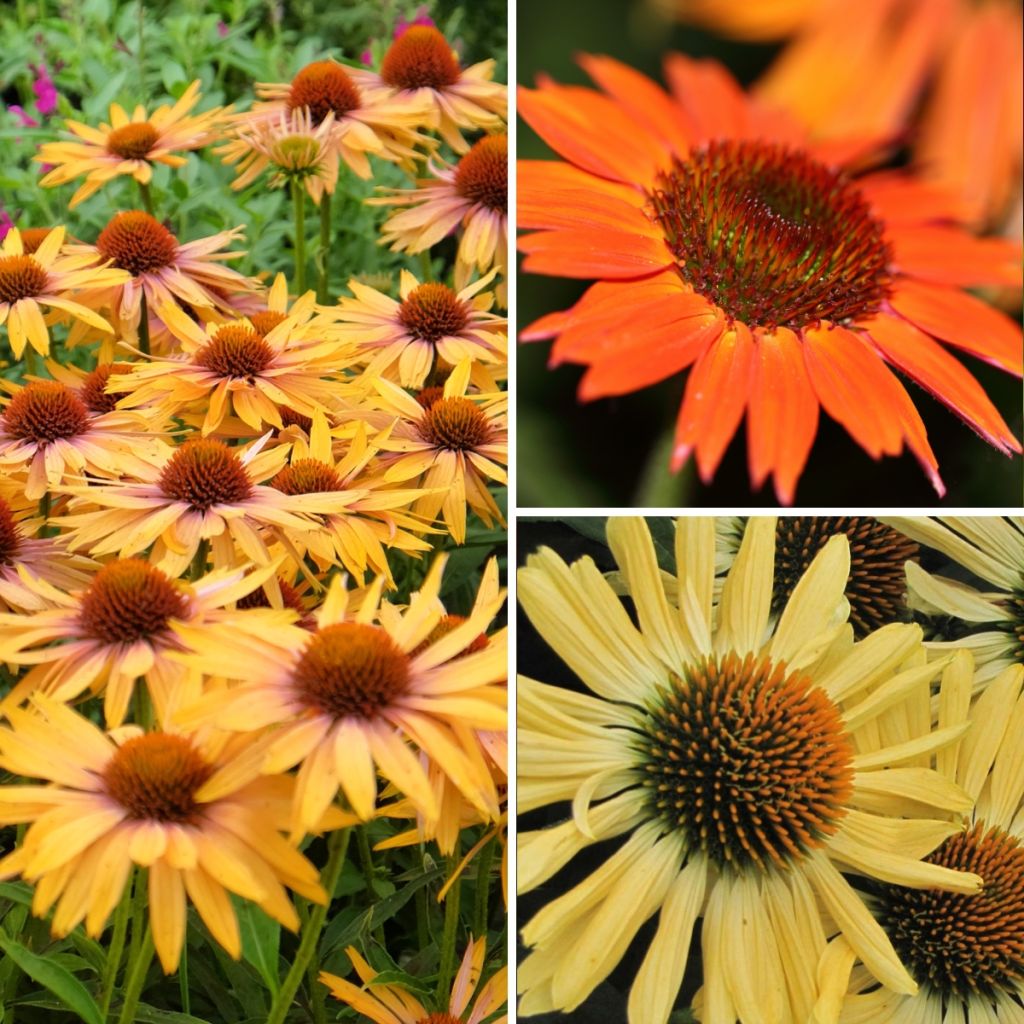

Hot Tones Echinacea Collection
Hot Tones Echinacea Collection
Echinacea (x) purpurea Hot Summer, Big Kahuna, Aloha
Purple coneflower, Eastern purple conefflower
Special offer!
Receive a €20 voucher for any order over €90 (excluding delivery costs, credit notes, and plastic-free options)!
1- Add your favorite plants to your cart.
2- Once you have reached €90, confirm your order (you can even choose the delivery date!).
3- As soon as your order is shipped, you will receive an email containing your voucher code, valid for 3 months (90 days).
Your voucher is unique and can only be used once, for any order with a minimum value of €20, excluding delivery costs.
Can be combined with other current offers, non-divisible and non-refundable.
Home or relay delivery (depending on size and destination)
Schedule delivery date,
and select date in basket
This plant carries a 12 months recovery warranty
More information
We guarantee the quality of our plants for a full growing cycle, and will replace at our expense any plant that fails to recover under normal climatic and planting conditions.
Would this plant suit my garden?
Set up your Plantfit profile →
Collection items (3 plants)
Description
This collection of Coneflowers is ideal for adding a range of warm colours to your garden. The varieties that make up this collection, Echinacea purpurea 'Hot Summer', 'Big Kahuna', and 'Aloha', typically flower from July to October, fully blooming under radiant sunshine. Depending on the variety, they can reach a 60 to 90 cm height. The dark green foliage provides a lovely contrast to the flowers. These deciduous perennial plants are hardy, with their stump able to withstand temperatures as low as -20°C.
The collection consists of:
1 x Echinacea purpurea 'Hot Summer': This variety offers flowers in a vibrant orange that tend towards red as the season progresses. It can reach a height of 90 cm, and its foliage is dark green.
1 x Echinacea purpurea 'Big Kahuna': Distinguished by its honey-coloured flowers, this variety grows in dense clumps. It reaches a height of about 50-60 cm, has sturdy stems, and has a flowering period that lasts throughout the summer.
1 x Echinacea purpurea 'Aloha': With its lemon yellow flowers, 'Aloha' is the brightest of the collection. It grows up to 70 cm in height, and its foliage is slightly lighter than the other two varieties.
For best results, plant these Coneflowers in well-drained soil and full sun. They are perfect for borders, edges, and even pots on a terrace or balcony. 'Hot Summer', the tallest one, is ideally placed in the background, while 'Big Kahuna' and 'Aloha' can be planted in the middle or front. Plan for four plants per square metre and maintain a 40- to 50-cm distance between each plant.
For a harmonious garden, combine these Coneflowers with the Rudbeckia 'Goldsturm' and the Salvia nemorosa 'Caradonna'; their dark purple flowers will provide a striking contrast. Ornamental grasses like the Miscanthus sinensis 'Gracillimus' will accompany these perennials, adding texture and movement to your floral composition. The Coreopsis 'Moonbeam' presents pale yellow flowers that will complement the warm tones of the Coneflower collection. Its moderate height and spreading habit make it an excellent choice for the foreground or middle of the border, providing a smooth transition between the other plants. Combined with the Coneflowers, Rudbeckia, and sage, it will create a harmonious and colourful ensemble.
Flowering
Foliage
Plant habit
Botanical data
Echinacea
(x) purpurea
Hot Summer, Big Kahuna, Aloha
Asteraceae
Purple coneflower, Eastern purple conefflower
Cultivar or hybrid
Other Echinacea - Coneflower
View all →Planting and care
The Echinacea Hot Summer appreciates very sunny exposure and tolerates some shade in the afternoon. Plant it in a deep and well-drained soil. It is a hardy plant that withstands moderate drought, heat, and humidity. It even adapts when it is close to the coast or on a slope. Space the young plants 40 cm apart when planting. The echinacea is hungry, so regularly add a complete fertiliser to thrive. Prune the stems when the flowers have faded to encourage the next flowering. The echinacea doesn't like to be disturbed; it takes quite a while to establish itself.
Planting period
Intended location
Care
Planting & care advice
This item has not been reviewed yet - be the first to leave a review about it.
Similar products
Haven't found what you were looking for?
Hardiness is the lowest winter temperature a plant can endure without suffering serious damage or even dying. However, hardiness is affected by location (a sheltered area, such as a patio), protection (winter cover) and soil type (hardiness is improved by well-drained soil).

Photo Sharing Terms & Conditions
In order to encourage gardeners to interact and share their experiences, Promesse de fleurs offers various media enabling content to be uploaded onto its Site - in particular via the ‘Photo sharing’ module.
The User agrees to refrain from:
- Posting any content that is illegal, prejudicial, insulting, racist, inciteful to hatred, revisionist, contrary to public decency, that infringes on privacy or on the privacy rights of third parties, in particular the publicity rights of persons and goods, intellectual property rights, or the right to privacy.
- Submitting content on behalf of a third party;
- Impersonate the identity of a third party and/or publish any personal information about a third party;
In general, the User undertakes to refrain from any unethical behaviour.
All Content (in particular text, comments, files, images, photos, videos, creative works, etc.), which may be subject to property or intellectual property rights, image or other private rights, shall remain the property of the User, subject to the limited rights granted by the terms of the licence granted by Promesse de fleurs as stated below. Users are at liberty to publish or not to publish such Content on the Site, notably via the ‘Photo Sharing’ facility, and accept that this Content shall be made public and freely accessible, notably on the Internet.
Users further acknowledge, undertake to have ,and guarantee that they hold all necessary rights and permissions to publish such material on the Site, in particular with regard to the legislation in force pertaining to any privacy, property, intellectual property, image, or contractual rights, or rights of any other nature. By publishing such Content on the Site, Users acknowledge accepting full liability as publishers of the Content within the meaning of the law, and grant Promesse de fleurs, free of charge, an inclusive, worldwide licence for the said Content for the entire duration of its publication, including all reproduction, representation, up/downloading, displaying, performing, transmission, and storage rights.
Users also grant permission for their name to be linked to the Content and accept that this link may not always be made available.
By engaging in posting material, Users consent to their Content becoming automatically accessible on the Internet, in particular on other sites and/or blogs and/or web pages of the Promesse de fleurs site, including in particular social pages and the Promesse de fleurs catalogue.
Users may secure the removal of entrusted content free of charge by issuing a simple request via our contact form.
The flowering period indicated on our website applies to countries and regions located in USDA zone 8 (France, the United Kingdom, Ireland, the Netherlands, etc.)
It will vary according to where you live:
- In zones 9 to 10 (Italy, Spain, Greece, etc.), flowering will occur about 2 to 4 weeks earlier.
- In zones 6 to 7 (Germany, Poland, Slovenia, and lower mountainous regions), flowering will be delayed by 2 to 3 weeks.
- In zone 5 (Central Europe, Scandinavia), blooming will be delayed by 3 to 5 weeks.
In temperate climates, pruning of spring-flowering shrubs (forsythia, spireas, etc.) should be done just after flowering.
Pruning of summer-flowering shrubs (Indian Lilac, Perovskia, etc.) can be done in winter or spring.
In cold regions as well as with frost-sensitive plants, avoid pruning too early when severe frosts may still occur.
The planting period indicated on our website applies to countries and regions located in USDA zone 8 (France, United Kingdom, Ireland, Netherlands).
It will vary according to where you live:
- In Mediterranean zones (Marseille, Madrid, Milan, etc.), autumn and winter are the best planting periods.
- In continental zones (Strasbourg, Munich, Vienna, etc.), delay planting by 2 to 3 weeks in spring and bring it forward by 2 to 4 weeks in autumn.
- In mountainous regions (the Alps, Pyrenees, Carpathians, etc.), it is best to plant in late spring (May-June) or late summer (August-September).
The harvesting period indicated on our website applies to countries and regions in USDA zone 8 (France, England, Ireland, the Netherlands).
In colder areas (Scandinavia, Poland, Austria...) fruit and vegetable harvests are likely to be delayed by 3-4 weeks.
In warmer areas (Italy, Spain, Greece, etc.), harvesting will probably take place earlier, depending on weather conditions.
The sowing periods indicated on our website apply to countries and regions within USDA Zone 8 (France, UK, Ireland, Netherlands).
In colder areas (Scandinavia, Poland, Austria...), delay any outdoor sowing by 3-4 weeks, or sow under glass.
In warmer climes (Italy, Spain, Greece, etc.), bring outdoor sowing forward by a few weeks.

































